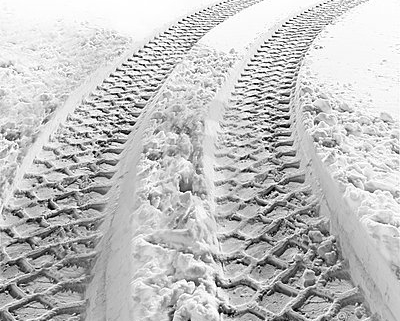Traction
The Oxford English dictionary defines traction as, “The action of drawing or pulling a thing over a surface, especially a road or track,” or, “The extent to which a product, idea, etc., gains popularity or acceptance.” It can also refer to the application of a sustained pull on muscles or a fractured bone. It’s a word we use loosely in everyday conversation. “I just can’t get any traction in the job search.”
It’s remarkable that the same word can refer to a tire pulling a truck over a layer of snow or to an idea that grows in importance, like, say, climate change. That it can refer to a patient in a hospital bed, hooked up to a contraption that pulls the person’s muscles or resets a bone. (Lately, and more personally, I’ve been thinking that traction can also describe the state of a writer who has recently finished two consecutive degrees and who is now trying to manifest a fulfilling career).
The Latin root of traction is tahere, essentially meaning, “push-pull.” Pushing while at the same time pulling. I find the root of the word to be more compelling than the segmented, separate definitions that grew from the original word. It’s the root that I find myself meditating upon, that lately occupies my mind.
Last year, midway through my MFA thesis, I discovered I have a serious autoimmune condition; a condition that means my immune system attacks my blood vessels. More specifically the arteries in my skull. Even more specifically, an artery that leads from my left carotid artery into my left eye. The prednisone that would save my vision, and potentially my life, would also give me the energy, the traction, to finish my thesis. It would usher me into the world of rheumatology, a specialty that focuses on holding a patient in perfect tension – maintaining enough health to function, but never really finding a cure.
Tapering the prednisone is a push-pull—tahere—endeavor. Two steps forward, one step back. When my artery swells again and I have a left-sided headache or vision changes, I take more, and when I have a few weeks of no swelling, I taper down, alternating doses every other day, until the artery no longer reacts. It’s a painfully slow process that involves a lot of setbacks (and a lot of unwanted weight).
Finding traction with my writing, while at the same time dealing with a serious health issue, is challenging. (Hence, the diversion of meditating on words like traction). With reflection, I’ve come to realize that in the tension, in the taut stretch of my writing muscle and in the push-pull of my treatment, there is a vulnerable, more honest place from which to write. A fractured place in need of some healing. The writing in this space is more raw, more humble, more alive. I’ve written new micro-essays, new chapters for my memoir. And the protagonist in my novel has become more layered, more vulnerable with each edit. I’ve found new energy in my writing. I’m more comfortable with the push-pull of writing a novel.
Most of the physicians I’ve seen during this strange year of vascular disease have proclaimed, “You’re too young to have this!” It’s a disease most common for a Scandinavian woman in her seventies (I can thank my Norwegian grandfather). Yes I’m too young to have this. But have it I do. I have days when I don’t write, when the illness wins a little. But then I find a word like tahere to help make sense of it all.
This year I’ve been left to look for ways to find traction on the slippery ground of a chronic illness, which in the end has created a surprising new tension, a new push-pull to my writing. I now search for the stretches of slippery ground that reveal an intriguing emotional landscape previously hidden. I dig a little deeper with my words. I look for stretches of time when my artery doesn’t swell and I can reduce the prednisone. And I meditate on a word to make sense of my newly altered reality. And I write, I write, like a tire finding traction in the snow, my words leaving tracks.


